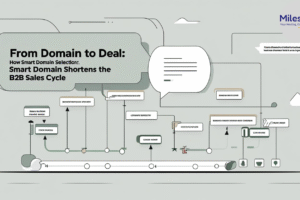When talking about a site’s SEO performance, site structure is a commonly overlooked factor. Quality content has many benefits,
but it doesn’t serve its purpose unless people (and search engines) can find it. We tend to forget that content presentation is just as important as the content itself.
A well-defined site structure improves user experience and helps Google to understand your website. If you want to optimize your site structure for SEO, we’ve got some useful tips on doing it right then you can optimize your site structure for SEO.
Why is site structure important?
Considering that site structure is a crucial optimization method, it is quite surprising how few site owners understand what having a site structure that enhances SEO means.
Before we get into the how-to of developing an SEO-friendly site structure, let’s see why structure matters.
Site structure impacts SEO in several ways. Without a strong structure, you won’t be able to enjoy SEO success. The structure of a web site is crucial both in terms of search engine optimization and usability.
Your site should be fast and easy to navigate to serve its primary purposes: attracting more customers,
getting more email subscribers, selling your products/services, making money from advertising, etc.
* A great site structure improves user experience and helps users engage with the site. People appreciate being able to locate what they are seeking quickly.
Therefore, users need a strong and logical site structure where everything is where they expect it to be.
* Google likes the same things its users. A site with poor CTRs and low dwell time will not get high Google rankings. Optimizing your site structure for SEO can reduce your site’s bounce rate and reduce dwell time.
* A clear site structure leads to better indexing and a higher position on the search engine results page. Googlebot and other web crawlers crawl a site’s structure in order to index the content.
With a good site structure, the crawlers can access and index the content with ease.
* A good structure provides your site with sitelinks – hyperlinks to subpages that appear under specific Google listings to help users navigate the site.
Besides making your site easier to navigate, sitelinks build brand reputation and user trust, improve your Google rankings, increase clickthrough rates,
and shorten the conversion funnel. If your site has a good structure, Google’s algorithm will automatically award it with sitelinks.
Ways to optimize your site structure for SEO
Let’s move to the main points where we will learn how to optimize your site structure for SEO so that you can get more benefits through this.
1. Plan out a clear hierarchy
A strong site structure is a product of an accurate organization. A site “hierarchy” is a way of organizing its information.
* To help search engines understand which topics you want to rank for, you must group your pages properly and divide them into categories.
Try not to overcomplicate things. Make your hierarchy clear and logical, and make each main category unique and distinct.
* Avoid having too many main categories; more than seven would be too many.
* The number of subcategories within each category should be approximately the same.
* Be sure that each subcategory is related to the main category it belongs to.
The ideal time to develop a good structure is before you start creating a website. If you already have a site, you can rethink its design and reorganize some navigational elements so as to enhance structural SEO.
If you don’t want to tackle this task on your own, consider consulting with Link Department or other professionals whose job is to help websites boost their online presence and organic rankings.
2. Your navigation structure should not be too deep
To optimize your site structure for SEO, make sure its pages are not buried too deep within the site. A shallow site structure is far more preferable than a deep one.
A shallow site is one that requires three clicks maximum to see every page.
3. Your URL structure should follow your hierarchy
The URL structure is another important element of optimizing your site structure for SEO. Your URL structure should follow your site’s navigation hierarchy.
If you have logically planned out your hierarchy, it should not be too difficult to organize your URL structure accordingly. Your URLs should have real words instead of symbols and appropriate keyword coverage.
4. Create your website navigation in HTML or CSS
When you create your navigation, simplicity goes a long way. Coding in HTML and CSS is the way to go.
The crawler will not be able to adequately cover your site’s navigation and hierarchy if you opt for Flash, JavaScript, and AJAX.
5. Your header should list your main pages
Create a top header that lists out your main navigation pages. Adding more menu elements aside from your main categories could create an unnecessary distraction.
Creating dropdown menus using CSS effects or disappearing menus is not advisable. Although they could be interesting to the user, this type of menu does not enhance your site’s SEO.
Using an image-based navigational structure is not recommendable either. Using text links with suitable anchors is the best way to optimize your site structure for SEO.
If you add a footer with menu links, duplicate the main links from the top navigational menu in your footer navigation menu without adding additional category listings or changing the links’ order.
6. Create a comprehensive internal linking structure
Internal links tell the search engines what pages on your site are important and how to get to them. They allow users to navigate your site, help establish information hierarchy for your site, and help spread link juice across your site.
Overthinking and overcomplicating your internal linking structure is, you guessed it, a bad idea. Therefore, keep it as simple as possible.
There should be links leading to and from each page on your site. The more internal links you have across all of your pages, the better it is for SEO.
Read More
- Top 400+ Free Directory Submission Sites List (Updated)
- 400+ High DA PA Free Business Listing Sites In India
- 20 Best Social Media Marketing Tools That Will Boost Engagement
- The Ultimate Guide To Keyword Research For SEO (Updated)















Amazing post !! love all your post keep posting more goodluck cheers..keep uploading more goodluck !
nice post love your blogs goodluck!